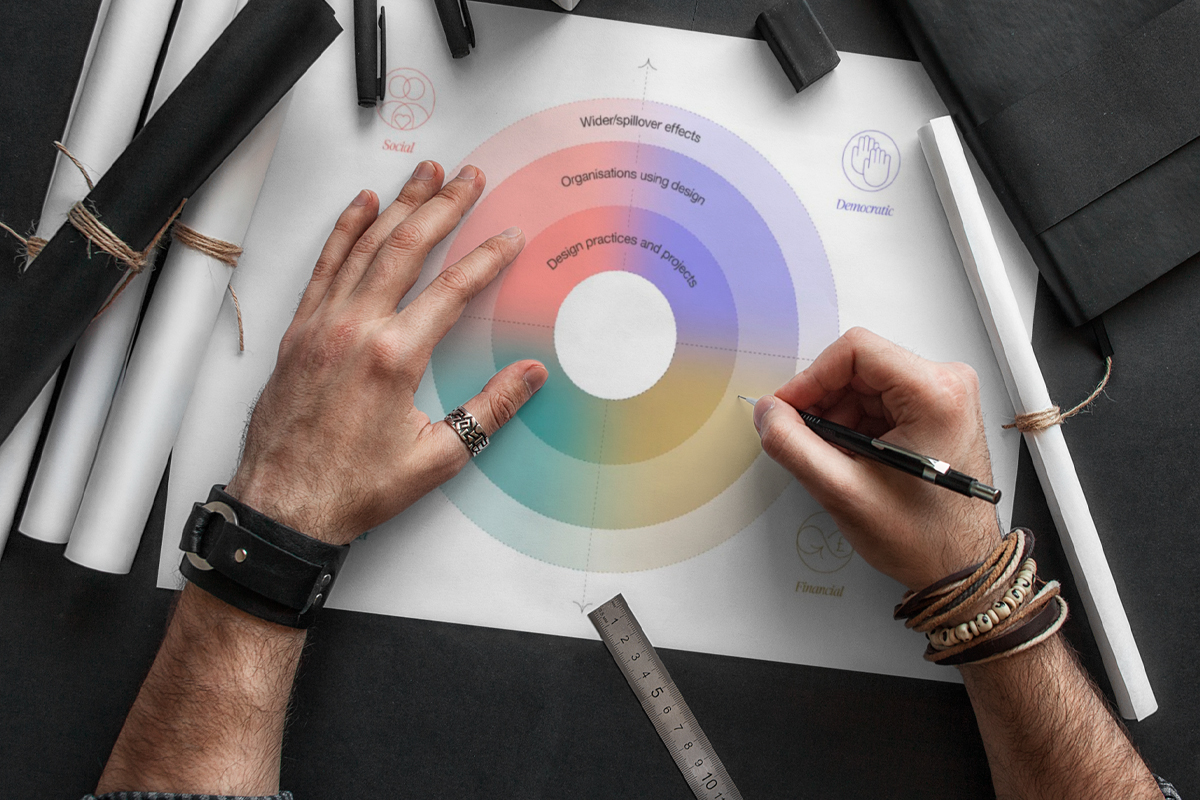About two and a half years ago, I introduced the concept of daily ethical design, driven by frustration with the barriers hindering the achievement of usable, equitable, and privacy-centric design. The aim was to integrate design ethics into daily work, processes, and tools at a structural level. Despite initial efforts utilizing tools like checklists and assumption tracking, achieving a consistently high moral quality of design proved challenging across all projects. A deep dive into the root causes led to an understanding of the systemic issues within the prevailing capitalist structure that perpetuates consumerism, inequality, and an obsession with endless growth.
In the current system, driven by the pursuit of double-digit growth and aggressive sales targets, even well-intentioned human-centered approaches have become entwined in a mechanism that promotes excessive consumption. To address this, it’s essential to act at the right level of the system. System thinker Donella H. Meadows outlined effective ways to influence a system, and when applied to design, it becomes clear that focusing on information flows—the exchange of ethical methods, toolkits, articles, and conferences—falls short of bringing about substantial change.
To structurally integrate ethics into daily design practice, it’s crucial to shift the focus to the level of self-organization and, even more potent, objectives and metrics. Recognizing that companies are primarily driven by the objective of making more money, it becomes evident that changing measurable objectives from the bottom up is the key to incorporating ethics into daily design. The traditional model of success, where a product is deemed viable if it’s desirable, feasible, and financially viable, needs a reevaluation. While feasibility and desirability are considered means, viability becomes the ultimate goal, often overshadowing the other dimensions.
A purpose-driven company would aim to reverse this dynamic, treating finance as a means rather than the ultimate goal. Introducing a fourth dimension to the traditional model, the ethical impact of designs on the world becomes imperative. While similar models have incorporated terms like accountability, integrity, or responsibility, what’s often missing is the necessary step of creating achievable and inspirational objectives for ethical design. These objectives must go beyond mere desirability and address the ethical impact of products on individuals and society, contributing to a healthier balance with nature. The path to achieving this shift may vary based on culture, values, and industry, but the importance lies in initiating a change toward a more ethical design paradigm.














Comments are closed